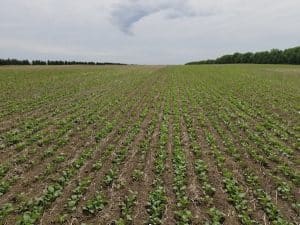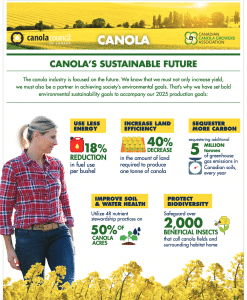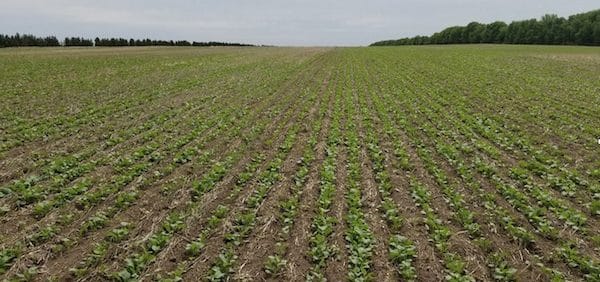Economic and environmental sustainability often go together. Here are 20 tips from the Canola Digest Science Edition 2018 that can help a farm increase profits while improving pest management, fertilizer and harvest decisions.

Stand establishment
A uniform early-established canola stand of 5 to 8 plants per square foot can reduce pest management costs, allow for earlier harvest and improve yield compared to thinner, later and uneven stands. Here are a few practices to improve stand establishment.
1.Calibrate seeding rate based on seed size and population target. Use the tools at canolacalculator.ca.
2. Slow down. If a drill is not performing as needed, slow down in 0.5-mph increments until placement improves.
3. Zero and reduced tillage can bring a lot of benefits, but make sure the seeder has the trash clearance to allow good seed placement. Residue management can be fully achieved with a good combine chaff spreader, but some additional harrowing or possibly waiting for dry stubble conditions may be required on heavy residue fields to avoid excessive residue bunching and penetration issues at seeding.
4. Establish canola early to improve yield and reduce greenhouse gas (GHG) intensity.
READ the Canola Digest article for more detail on these points.
Fertility management
Applying enough fertilizer to maximize profit potential and taking steps to reduce nutrient losses will improve canola yield per tonne of fertilizer applied. This will have a positive effect for both economic and environmental sustainability. Here are a few practices to improve fertility management:
5. If applying fall fertilizer, band the nitrogen to minimize run-off and slow nitrification.
6. Keep seed-applied fertilizer to a minimum. The general recommendation is to apply up to 20 lb./ac. of phosphate with the seed and place everything else outside the seed row.
7. Apply fertilizer rates that align with increased yield potential.
8. Use soil tests to determine what each field needs.
READ the Canola Digest article for more detail on these points.
Integrated pest management
Biodiversity of habitat across the farm can increase populations of bees and beneficial, which can increase yields and provide a natural check on insect populations. Biodiversity through crop rotations can reduce disease severity and expand management options for weeds. Here are a few practices to improve IPM:
9. Scout before spraying. Spraying has a cost and farmers want to make sure the pest they’re spraying is actually causing enough crop damage to justify that cost.
10. Follow insect thresholds. Find out more.
11. Know your beneficial insects. Find out more.
12. Reduce weed competition early. The studies behind this recommendation.
13. Manage diseases with genetic resistance and crop rotation.
14. Keep equipment clean. Moving soil means moving clubroot, verticillium, aphanomyces (pea and lentil disease), phytophthora (soybean disease), weed seeds and nematodes.
15. Maintain habitats. Natural habitat has a benefit to farm profitability, including increased crop production efficiency and yields
READ the Canola Digest article for more detail on these points.
Harvest management
Cutting later to realize a canola crop’s full yield potential and taking steps to reduce in-field and storage losses mean more canola per acre goes to market. It has a big impact on real production per acre. Here are a few practices to improve harvest management:
16. Cut later. A trend to delayed cutting – either through later swathing or straight combining – will increase yield over earlier cut timings.
17. Hit plant establishment targets. Achieving the target of six to eight plants per square foot (read the plant establishment article on page 10) will mean fewer side branches, which has benefits for harvest timing and possibly quality and yield.
18. Check for losses and make combine adjustments if losses are too high. Find out how.
19. Use genetics, such as pod-shatter reduction, to expand harvest options and reduce losses.
READ the Canola Digest article for more detail on these points.
Genetics
Genetics will drive a large share of the yield gains needed to get to 52 bu./ac. Genetic traits also reduce pesticide use, increase crop tolerance to disease and improve harvest management – all enhancing the sustainability of canola.
20. Look for genetic solutions to rising problems in your canola fields, but know that resistance (R) traits in particular may lose their effectiveness if the same trait is used repeated in short rotations.
READ the Canola Digest article for more detail on this point.

